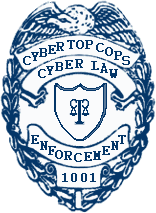Bank of America Alert Account Has Insufficient Funds
[Previous Example] [Share This Page] [Back To The Main SHPAMEE Index] [Next Example]
VERY IMPORTANT INFORMATION, READ THIS FIRST: The example and associated information published on this page are subject to the SHPAMEE Terms Of Use. Please familiarise yourself with these terms before viewing or using any information on this page.
Header:
X-Account-Key: account6
X-UIDL: x
X-Mozilla-Status: 0001
X-Mozilla-Status2: 00000000
X-Mozilla-Keys:
Delivered-To: x
Received: by 10.58.218.134 with SMTP id pg6csp343089vec;
Wed, 15 Aug 2012 11:12:19 -0700 (PDT)
Received: by 10.68.231.233 with SMTP id tj9mr42005042pbc.39.1345054339324;
Wed, 15 Aug 2012 11:12:19 -0700 (PDT)
Return-Path: <noreply@bankofamerica.com>
Received: from bankofamerica.com ([46.99.46.207])
by mx.google.com with ESMTP id px6si3641583pbc.184.2012.08.15.11.12.16;
Wed, 15 Aug 2012 11:12:19 -0700 (PDT)
Received-SPF: softfail (google.com: domain of transitioning noreply@bankofamerica.com does not designate 46.99.46.207 as
permitted sender) client-ip=46.99.46.207;
Authentication-Results: mx.google.com; spf=softfail (google.com: domain of transitioning noreply@bankofamerica.com does
not designate 46.99.46.207 as permitted sender) smtp.mail=noreply@bankofamerica.com
Message-ID: <x@bankofamerica.com>
Date: Wed, 15 Aug 2012 19:12:18 +0100
Reply-To: "Alert Account" <noreply@bankofamerica.com>
From: "Alert Account" <noreply@bankofamerica.com>
User-Agent: mPOP Web-Mail 2.19
MIME-Version: 1.0
To: <x>,
<x>
Subject: Bank of America Alert Account Has Insufficient Funds
Content-Type: text/html;
charset="iso-8859-1"
Content-Transfer-Encoding: 7bit
Body:
|
||||||||||||||||||||||||||||||||||||||||||||||||||||||||||||||||||||||||||||||||||||||||||||||||||
Comments:
Related Cyber Criminal Profiles:
No related profiles found.Similar Spam Examples:
Bank of America Phishing Scam - Bank of America Alert: New Message From BanBank of America Phishing Scam - Verification of Your Current Details
Citibank Phishing Scam - Your Citi Credit Card Statement
Banking Phishing Scam - Your Chase Credit Card Account
Orchard Bank Phishing Scam Account Alert Statement Available
Related Malware Samples:
No related malware samples found.[Previous Example] [Share This Page] [Back To The Main SHPAMEE Index] [Next Example]









...
Authentication-Results: mx.google.com; spf=softfail (google.com: domain of transitioning noreply@bankofamerica.com does
not designate 46.99.46.207 as permitted sender) smtp.mail=noreply@bankofamerica.com
Anyone who can do a reverse DNS lookup will notice that 46.99.46.207 does not resolve to bankofamerica.com, but since this e-mail was sent to a GMail account, Google already detected this discrepancy and placed the e-mail in the Spam folder.
If you are a Bank of America client your should be able to verify this easily, especially if you can remember the last time you logged in. But the scammers are bargaining on the fact that most people can't remember the last date and time they logged into their online banking product and is using something familiar to Bank of America customers to add a false sense of security. Just shows you how phishing scammers can use a weakness like this to their advantage.
The main catch of this phishing e-mail is the title attribute the scammers added to ALL the links in this e-mail. If you hover with your mouse pointer over the Bank of America logo in the top-right corner of the example above, you will notice that the URL "https://www.bankofamerica.com/index.jsp" will appear in a pop-up tooltip. This immediately creates the impression that the link will take you to the real Bank of America website, but you need to pay attention to the URL displayed in your status bar.
In this example (as in all our spam examples) we removed the scammer's link and replaced it with our standard http://www.cybertopcops.com/never-click-on-links-in-spam-emails.php link. So if you paid close attention to your status bar you would have noticed that the link displayed in the pop-up tooltip is not the same as the one displayed in your status bar. So if you click on the link it will take your to a totally different page as the one displayed in the pop-up tooltip.
Go ahead and click the links in this example and you will see what we mean.
...
To: Customer
If this really came from Bank of America, they would have known your name and included it here. But don't be fooled, some phishing scammers have more complete e-mail databases and can possibly have your name on file as well, so don't think it is a legitimate e-mail if they know your name.
Another VERY desperate attempt from the scammers and a wild shot in the dark, hoping that this e-mail will reach one Bank of America customer whose account number ends on 8572. They also bargain on the fact that the recipient of this e-mail will not pay close attention to this. But if you are vigilant enough you will notice that these last 4 digits does not match the last 4 digits of your account and you will immediately know that this e-mail is a scam.
Here they simply quote your e-mail address. Think about this for a moment. This means absolutely nothing. Of course the scammers know your e-mail address, otherwise they wouldn't have sent you this e-mail in the first place. So it means absolutely nothing if they quote your e-mail address here, it is no sign of authenticity at all, because anyone who knows your e-mail address can add it here.
The bottom line is, this is a highly targeted and deceitful phishing scam, aimed at Bank of America customers whose account number ends with 8572. The great danger of this e-mail is that it is familiar among Bank of America customers, so you can easily be caught off guard, unless you pay very close attention to the links before you click on them.